- Home
- Alison Weir
Queens of the Conquest Page 4
Queens of the Conquest Read online
Page 4
It may be that, lying in her sickbed, Matilda had been reflecting on Brihtric’s rejection and concluding that her pride would be salvaged by the announcement of her marriage to the far higher-born William, who could offer her so much more. Or possibly Brihtric had only just turned her down, and she accepted William on the rebound.
Her father was delighted with her change of heart. He withdrew his soldiers and let it be known that his daughter was now amenable to the marriage. William renewed his proposal and negotiations were reopened. This time, Matilda readily assented.
“His request pleases me well,” she said,26 and preparations for the wedding began in earnest.
Historians have questioned the truth of the story, asserting that it is a later tradition, and possibly French propaganda designed to discredit the Norman dukes after the duchy fell to the French in 1204. Certainly the Chronicle of Tours is a hostile source. But the tale appears in three other chronicles, one written in Normandy and two in Flanders. Baldwin of Avesnes, who wrote one of the latter, was drawing on older sources lost to us. There may be a grain of truth in the tale.
3
“William Bastard”
The taint of bastardy had haunted William all his life. His mother, Herleva of Falaise, had been a tanner’s daughter. His father, Duke Robert the Magnificent, was said to have noticed her washing clothes in the river, and the result was William, born around 1027–28. Herleva nearly died giving birth, and while her attendants worked to save her, her newborn son was laid on the floor, where he grasped the rushes in such a strong little fist that those watching are said to have predicted he would grow into “a mighty man, ready to acquire anything within his reach, and that which he acquired he would with a strong hand steadfastly maintain against all challengers.”1
“He is little, but he will grow,” the Duke his father said in 1035, when he went on a pilgrimage to Jerusalem and left seven- or eight-year-old William, his only son, to govern Normandy during his absence. But that year Robert died in Asia Minor on his way home. Since he left no legitimate heir, the child William succeeded him as duke.
Unlike Matilda’s, William’s early years were turbulent. “I have been continually involved in numberless troubles,” he recalled on his deathbed. “I was bred to arms from my childhood.”2 Many Norman lords resented a bastard wearing the ducal crown. The boy’s tutors and guardians were murdered, and there were attempts on his life, one in his own bedchamber. But the young Duke survived and grew into a man to be reckoned with, and with him grew his legend. “He was mild to the men that loved God, and beyond all measure severe to the men that gainsaid him. He was very stern, and a wrathful man, so that none durst do anything against his will.”3 At twenty, in 1047, at the battle of Val-ès-Dunes, William proved his skill as a soldier, and thereafter his reputation spread. Every battle he fought he won, and in Normandy and beyond he came to be greatly admired and respected—but never loved, although he possessed considerable powers of leadership and courage, and inspired loyalty in his followers.
In an age in which the average male height, based on a study of surviving armor, was about five foot five, William was tall at five foot ten—a height estimated from his thighbone, examination of which revealed that he was strong and muscular.4 Contemporaries described him as thickset, with “a fierce countenance,” reddish hair that receded early in life, and a rasping, guttural voice. When his tomb was opened in 1522, his body—that of a large man with long arms and legs—was sufficiently well preserved for a portrait to be made, which was painted on wood and hung above the tomb.5 It shows a man in early-sixteenth-century dress with red hair, a beard and a strong resemblance to the French King François I or even Henry VIII. If the face is that of the Duke as he looked in life, it is very different from traditional representations of him, such as the helmet-haired, clean-shaven images in the famous Bayeux Tapestry, which depicted the Norman Conquest of 1066 and still survives today.
William “was majestic whether sitting or standing,” although increasingly “the protuberance of his belly deformed his royal person,” despite his being moderate in eating and drinking.6 He enjoyed excellent health, and frequently indulged his great passion for hunting.7
He was a hard, active and forceful man, with great presence and authority, resolute, iron-willed and avaricious. Despite his ruthlessness, he was known as a just and pious ruler, albeit one to be feared. Men quaked in the face of his righteous anger. He set great store by loyalty, abhorred drunkenness8 and, especially in early youth, “esteemed chastity to such an extent” that “it was believed certain that he could do nothing in a woman,”9 which was a matter of concern to contemporaries who were concerned about the succession. Unlike his ducal forebears for four generations, he never sired a bastard.10
William’s attitude to sexual morality was probably a reaction to his own bastardy, which he found deeply shameful, as his violent treatment of those who taunted him with it makes clear. While defiantly signing his letters “William Bastard,” the Duke would not suffer anyone to remind him of his base birth. After the besieged inhabitants of Alençon in Normandy hung tanned hides over the walls in mockery of his grandfather’s trade, the town fell to William, and he meted out a grim revenge, ordering the hands and feet of thirty-two of those who had jeered to be chopped off, himself standing by to see it done.
For all the concerns of contemporaries, he would soon prove himself capable of siring children, although it is possible that he could only achieve sexual release within the hallowed security of the marriage bed.
This was the man—the stark, stern, upright man—whom Matilda had consented to wed.
4
“The Greatest Ceremony and Honour”
But wed, it seemed, they would not be. In 1049, Count Baldwin’s ally Godfrey, Count of Upper Lorraine, was defeated in battle by his overlord, the “Roman” Emperor Henry III. The Holy Roman Empire was a feudal state encompassing present-day Germany and the surrounding regions, parts of northern Europe and northern Italy. It had been established in 800, when the Pope crowned Charlemagne, King of the Franks, as emperor in Aachen Cathedral, an act that was seen as the restoration of the old Roman Empire. From 962, Charlemagne’s German descendants had presided over the Empire, in an uneasy partnership with the Pope. However, the German emperors did not style themselves “Holy” Roman Emperor until 1254.
Flanders was also a fief of the Holy Roman Empire, so Baldwin was obliged to go to Aachen with Godfrey to make formal submission to the Emperor, who was apparently determined on revenge. In October that year, at the Papal Council of Rheims, Henry III’s protégé and ally, the reforming Pope Leo IX, asserted the authority of the Holy See as never before in imposing celibacy on the clergy and the enforcement of canon law on simony, marriage, consanguinity and incest. While he was about it, he forbade Count Baldwin to give his daughter in marriage to William, and prohibited William from receiving her. No reason was given for the sudden ban, apart from the assertion that such a marriage would be contrary to canon law, and even today it is hard to explain Leo’s decision.
There is no evidence that Matilda had been precontracted to Brihtric Meaw or anyone else, which would have prevented her marrying William, a precontract then being as binding as a marriage. Orderic Vitalis called Matilda William’s “cousin,” implying that the couple were related within the prohibited degrees of consanguinity, a view taken by several twelfth-century chroniclers. There has been much conjecture as to the nature of this relationship, and speculation that the affinity arose from Matilda’s mother, Adela of France, having perhaps been the wife of William’s uncle, Richard III, Duke of Normandy, prior to her marriage to Count Baldwin. Richard was certainly betrothed at one time to a lady named Adela (or Adelais), but her identity is uncertain, and if such a marriage took place, it was never consummated.
Other writers allege that Matilda, like William, was descended from Rollo, the Viking who gained Normandy from the French and became its first ruler in 911, but there is no evide
nce for this, and even if there were, the blood tie was too far back to constitute a bar to marriage. Yet another source states that William and Matilda were cousins in the fifth degree, but that relationship is hard to determine.
The consanguinity possibly arose from Matilda’s grandfather, Baldwin IV, having married William’s aunt, Eleanor of Normandy, after the death of his first wife, the mother of Baldwin V, creating consanguinity even though there was no blood tie. This connection made William and Matilda first cousins once removed—or cousins in the first degree. At that time, the Church prohibited marriages between cousins related up to the seventh degree,1 yet it also frequently granted dispensations for such unions, although the more closely the couple were related, the more difficult it was to obtain one.
It was not unusual for feudal rulers to ignore such niceties, but William was a devout son of the Church who devoted himself wholeheartedly to the worship of God.2 Already, thanks to his utmost zeal3 in undertaking great ecclesiastical reforms in Normandy, he had gained favor with the clergy. He may already have been aware of a possible impediment to marrying Matilda, for he had sent a strong contingent of churchmen to Rheims with Lanfranc of Pavia, the respected Benedictine Abbot of Bec-Hellouin (and future archbishop of Canterbury), probably to persuade the Pope to sanction the union. It would not have done for a man with William’s reforming reputation to contract an uncanonical marriage, for any controversy over that marriage would have an adverse impact on the ducal succession and future standing of the Church in Normandy. Most Norman bishops were hostile to the union after the Pope’s ban had been announced. This was probably why Norman chroniclers, most of whom were monks, were reticent about discussing the prohibition.
But underlying all the ecclesiastical histrionics, there were shrewd political reasons for Pope Leo’s ban. Leo was an imperialist, and aware that an alliance between Flanders and Normandy would produce a strong coalition against the Empire. He knew that William “was growing in power and influence, and surpassing all his neighbours in the magnificence and display of his new way of life.”4 Furthermore, a Norman adventurer, Robert Guiscard, had just conquered southern Italy and made himself its ruler, which the Pope perceived as another threat. Possibly his ban was motivated purely by political revenge, or intended to block an alliance that boded ill for the Emperor and to curb the power of the Normans.
No doubt William was aware of the Pope’s true motives. In 1050, he sent Lanfranc, Abbot of Bec-Hellouin, and Geoffrey, Bishop of Coutances, to Rome to seek the Pope’s advice.5 Lanfranc was one of the most admired and sincere churchmen in Normandy. William “venerated him as a father, respected him as a teacher, and loved him like a brother or son.”6 Lafranc was “a man comparable with the Ancients for learning and religious fervour,”7 his reputation for “admirable genius and erudition”8 had already spread far beyond the duchy, and his name was spoken of with reverence in Rome itself. The outcome of this embassy is not known. It has been suggested that the matter was quickly resolved and the Pope was persuaded to issue a dispensation,9 but other evidence conflicts with that theory, and it seems more likely that in the end William flouted the ban.
It has also been suggested that when Pope Leo engaged in a war to drive out the Normans who had conquered southern Italy, and was taken prisoner by them after the Battle of Civitate on 15 June 1053, William seized his chance and married Matilda.10 Various chroniclers give dates for the marriage as far apart as 1050 and 1056, with most stating 1050, which was almost certainly the year it took place, when William was twenty-three and Matilda nineteen at most.
It was long claimed that the earliest references to Matilda as William’s consort and Duchess of Normandy appear in two charters granted in 1053, one to the abbey of the Holy Trinity at Rouen,11 and the other to the Benedictine abbey of Saint-Julien at Tours.12 But Matilda appears with William as a witness to two original charters to the abbey of Saint-Wandrille dated 1051,13 as does their eldest child Robert. It was not unusual for highborn infants to be witnesses to charters, and since William and Matilda must have been married after October 1049, and most likely in 1050, Robert was probably born in 1051. This fits with his being described as adolescent in 1066.14
—
From earliest times, royal weddings have been seen as a cause for great celebrations. Royal nuptials signify something momentous for society at large. Securing the royal succession has always been a matter of public concern, which is why the marriages of monarchs and lords have always been of crucial importance to the welfare and commonweal of their people. They symbolize a ruler’s dynastic responsibility to his subjects, and a promise that the ancient sanctified bloodline will be continued and its purity maintained.
The outward trappings of royal marriages were only half the story—the velvet glove, rather than the iron fist inside—and belied the fact that they could be the ceremonial cover for an unholy and sometimes brutal alliance. Age was not the most important consideration, and a king or lord might be much older than his bride. It was considered beneficial for a husband to be older than his wife, as she would be the more easily subject to his governance, whereas older wives might not take too kindly to it. Children could be betrothed or married in infancy, and the Church permitted conjugal cohabitation at fourteen for boys and twelve for girls, which was when they were considered capable of having intercourse. At least two of the queens in this book were twelve or younger when they married.
Many a young princess had to endure a difficult journey to her bridegroom, knowing she had to bid farewell, perhaps forever, to her family and homeland, and that she would be joined in marriage to a stranger almost as soon as she arrived. Whatever she felt about him, and however he treated her, she was expected immediately to sleep with him and produce children to secure his succession. Arguably, she was as much a sacrificial victim as any chained virgin in classical mythology.
Matilda had to travel over 150 miles to reach the county of Eu on Normandy’s eastern border, where her wedding was to take place. This was an age in which traveling could be challenging. There were no “carriages”; journeys were made by horse, on foot, or by cart or wagon, a means largely favored by ladies, although such conveyances were unsprung and uncomfortable. Women also rode on horseback, by which means one could cover twenty to thirty miles a day. Matilda’s journey probably took about a week. She was escorted “with all honour” by her father “even as far as Eu,” and attended by a magnificent train of nobles and ladies.15
William, an eager bridegroom, arrived at Eu first, attended by many knights and his mother, Herleva, and stepfather, Herluin, Viscount of Conteville.16 He lodged at the château of Eu17 as a guest of his cousin, Robert, Count of Eu. The château was surrounded by a hunting park and overlooked the River Bresle.18 Here William received Matilda and Count Baldwin, who had brought him rich gifts.19 A few days later, the marriage was solemnized, either in the cathedral of Notre-Dame d’Eu or in the chapel of the château, which was dedicated to the Virgin and still survives today. The ceremony itself took place in strict privacy,20 probably to preempt any objections. The Pope’s ban had clearly stung William. “He married her legally as his wife,” emphasized his chaplain, William of Jumièges, “with great pomp and much joy and jubilation.”
In 1476, an inventory of all the jewels, ornaments and books preserved in the treasury of Bayeux Cathedral recorded two cloaks of “incomparable richness,” which were described as the wedding garments of William and his bride. Matilda went to her wedding decked out in a rich, cope-like mantle embroidered with jewels and precious stones. William’s cloak was adorned with golden crosses, flowers, intaglios, gems and rich embroidery. He wore a helmet, also preserved at Bayeux.
Matilda brought with her a generous dowry: “her father gave her joyfully to Duke William with a very large store of wealth and very rich apparelment.”21 Upon marriage, however, William did not dower his bride lavishly: he gave her lands of only moderate value in the Pays-de-Caux, a vast plateau between the English Channel and
the River Seine.
After the ceremony, William and Matilda presided over a wedding feast in the château. Feasting was the traditional way to celebrate not only weddings, but also the great feasts of the Church—Easter, Whitsun and Christmas—and various holy days. Honored guests, including Count Baldwin and his wife, would have been seated with the ducal couple at the high table, which was set with a cloth. Servitors carried napkins over their arms and offered wine goblets to the Duke and Duchess. Bread for the table came as flat rolls, decorated with a cross. Fish was served in dishes and meat—kebab-style—on spits, and every dish was shared between two people. Everyone carried a knife that they brought to table for cutting and spearing food, which was then eaten with the fingers, which explains why hands were washed before and after meals; forks were unknown. The company would have been entertained by minstrels, troubadours, jongleurs or mummers. Fools and jesters made jokes, and there might have been dancing. Then the bride and groom would be ceremonially put to bed together by the guests, the priest would bless the bed, and everyone would depart, leaving the couple alone to do their dynastic duty. The public nature of the bedding ceremony reflected the accepted view that the getting of royal heirs was a matter of legitimate common interest.
—
When the celebrations were over and the guests had dispersed, William conducted his bride and her father “with the greatest ceremony and honour”22 to Rouen, his capital. It was “a populous and wealthy city thronged with merchants, and a meeting place of trade routes—a fair city set among murmuring streams and smiling meadows, abounding in fruit and fish and all manner of produce. It stands surrounded by hills and woods, strongly encircled by walls and ramparts and battlements, and fair to behold with its mansions and houses and churches.”23

 Richard III and the Princes in the Tower
Richard III and the Princes in the Tower Britain's Royal Families: The Complete Genealogy
Britain's Royal Families: The Complete Genealogy The Lady in the Tower: The Fall of Anne Boleyn
The Lady in the Tower: The Fall of Anne Boleyn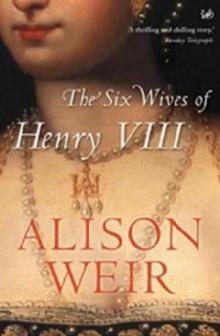 Six Wives of Henry VIII
Six Wives of Henry VIII Elizabeth of York: A Tudor Queen and Her World
Elizabeth of York: A Tudor Queen and Her World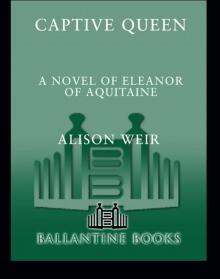 Captive Queen
Captive Queen Innocent Traitor
Innocent Traitor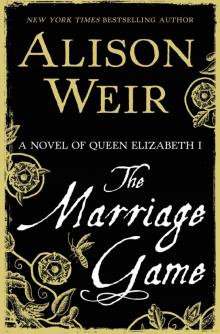 The Marriage Game
The Marriage Game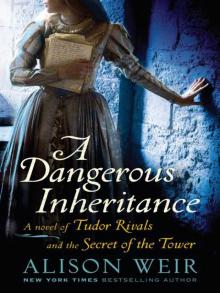 A Dangerous Inheritance
A Dangerous Inheritance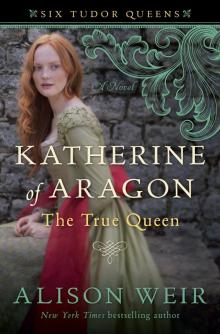 Katherine of Aragón: The True Queen
Katherine of Aragón: The True Queen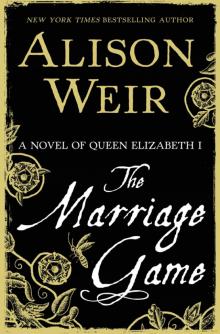 The Marriage Game: A Novel of Queen Elizabeth I
The Marriage Game: A Novel of Queen Elizabeth I Princes in the Tower
Princes in the Tower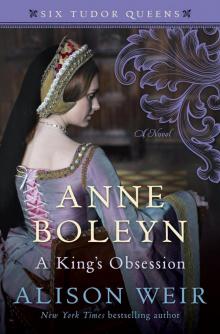 Anne Boleyn: A King's Obsession
Anne Boleyn: A King's Obsession Traitors of the Tower
Traitors of the Tower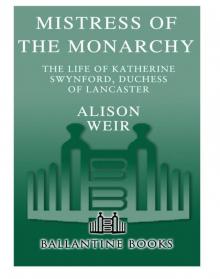 Mistress of the Monarchy: The Life of Katherine Swynford, Duchess of Lancaster
Mistress of the Monarchy: The Life of Katherine Swynford, Duchess of Lancaster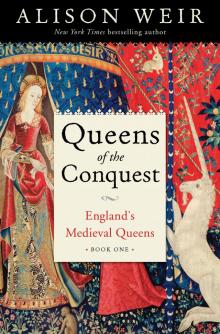 Queens of the Conquest: England’s Medieval Queens
Queens of the Conquest: England’s Medieval Queens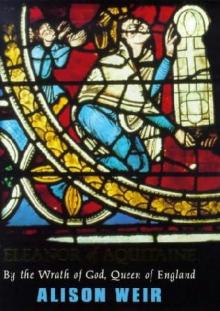 Eleanor of Aquitaine: A Life
Eleanor of Aquitaine: A Life Mary, Queen of Scots, and the Murder of Lord Darnley
Mary, Queen of Scots, and the Murder of Lord Darnley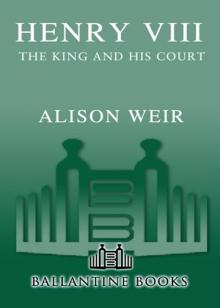 Henry VIII: The King and His Court
Henry VIII: The King and His Court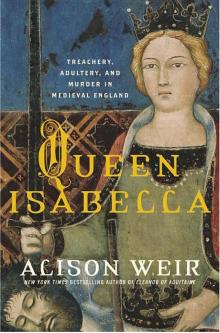 Queen Isabella: Treachery, Adultery, and Murder in Medieval England
Queen Isabella: Treachery, Adultery, and Murder in Medieval England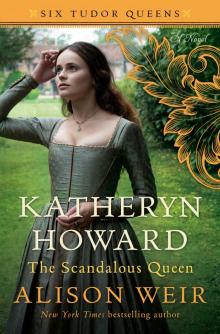 Katheryn Howard, the Scandalous Queen
Katheryn Howard, the Scandalous Queen Arthur- Prince of the Roses
Arthur- Prince of the Roses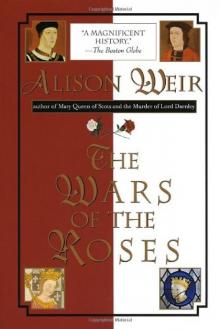 The Wars of the Roses
The Wars of the Roses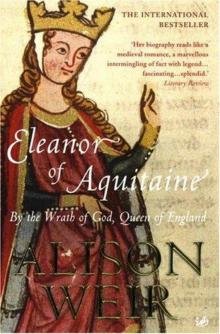 Eleanor of Aquitaine: By the Wrath of God, Queen of England
Eleanor of Aquitaine: By the Wrath of God, Queen of England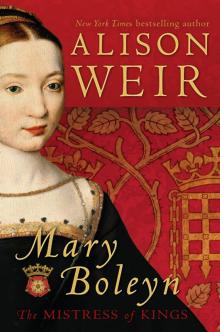 Mary Boleyn: The Great and Infamous Whore
Mary Boleyn: The Great and Infamous Whore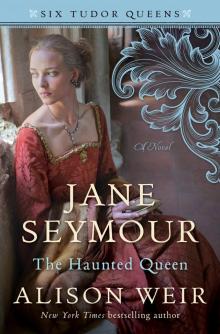 Jane Seymour: The Haunted Queen
Jane Seymour: The Haunted Queen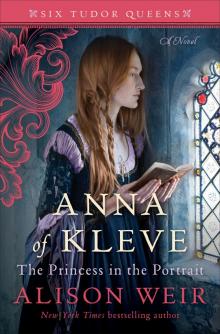 Anna of Kleve, the Princess in the Portrait
Anna of Kleve, the Princess in the Portrait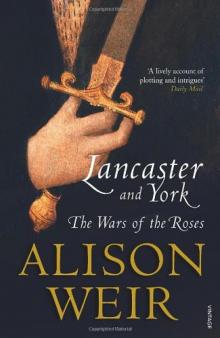 Lancaster and York: The Wars of the Roses
Lancaster and York: The Wars of the Roses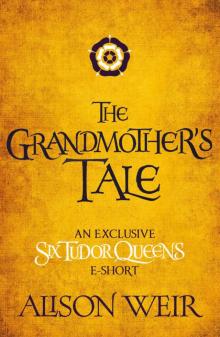 The Grandmother's Tale
The Grandmother's Tale The Princess of Scotland (Six Tudor Queens #5.5)
The Princess of Scotland (Six Tudor Queens #5.5)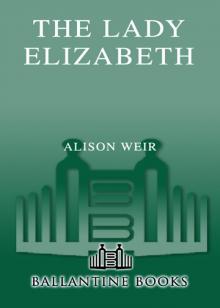 The Lady Elizabeth
The Lady Elizabeth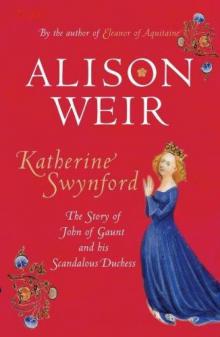 Katherine Swynford: The Story of John of Gaunt and His Scandalous Duchess
Katherine Swynford: The Story of John of Gaunt and His Scandalous Duchess The Curse of the Hungerfords
The Curse of the Hungerfords The Lost Tudor Princess: The Life of Lady Margaret Douglas
The Lost Tudor Princess: The Life of Lady Margaret Douglas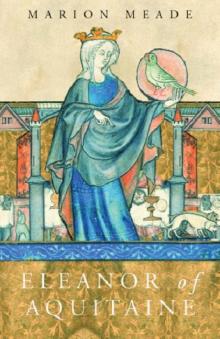 Eleanor of Aquitaine
Eleanor of Aquitaine Mistress of the Monarchy
Mistress of the Monarchy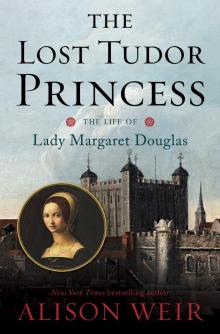 The Lost Tudor Princess
The Lost Tudor Princess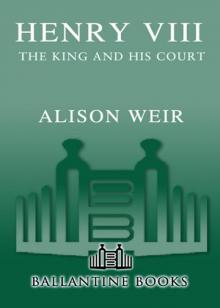 Henry VIII
Henry VIII Anne Boleyn, a King's Obsession
Anne Boleyn, a King's Obsession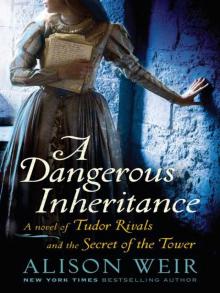 A Dangerous Inheritance: A Novel of Tudor Rivals and the Secret of the Tower
A Dangerous Inheritance: A Novel of Tudor Rivals and the Secret of the Tower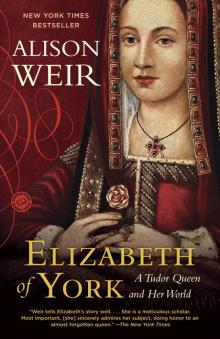 Elizabeth of York
Elizabeth of York Katherine of Aragon, the True Queen
Katherine of Aragon, the True Queen Katherine Swynford
Katherine Swynford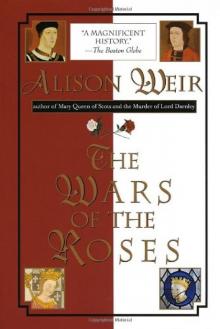 Wars of the Roses
Wars of the Roses Queens of the Conquest
Queens of the Conquest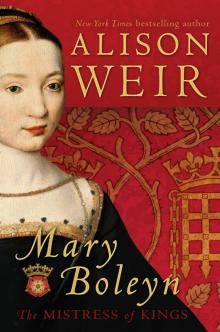 Mary Boleyn
Mary Boleyn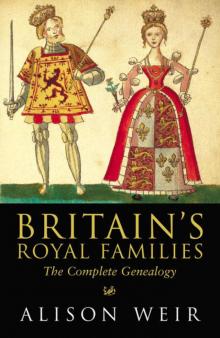 Britain's Royal Families
Britain's Royal Families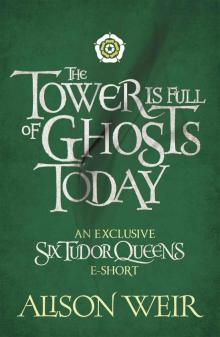 The Tower Is Full of Ghosts Today
The Tower Is Full of Ghosts Today Life of Elizabeth I
Life of Elizabeth I Anne Boleyn A King's Obssession
Anne Boleyn A King's Obssession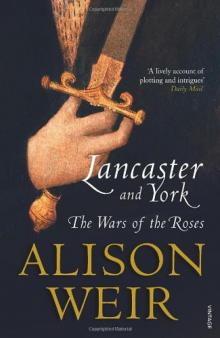 Lancaster and York
Lancaster and York Jane Seymour, the Haunted Queen
Jane Seymour, the Haunted Queen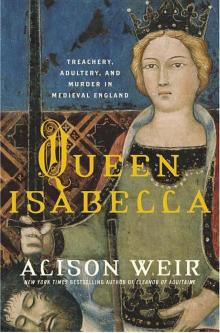 Queen Isabella
Queen Isabella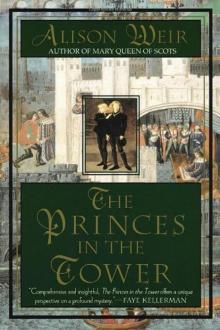 The princes in the tower
The princes in the tower